
It seems that these days stories do not enter the culture in the same way that they did in the past. The Great Escape from Alcatraz has gone down as a legend, been featured in many documentaries, and captured the attention of people from the day it occurred. In June, 1962, three inmates attempted to escape the inescapable; Alcatraz. This is the story, the facts, and the theories of what may have happened in the end.
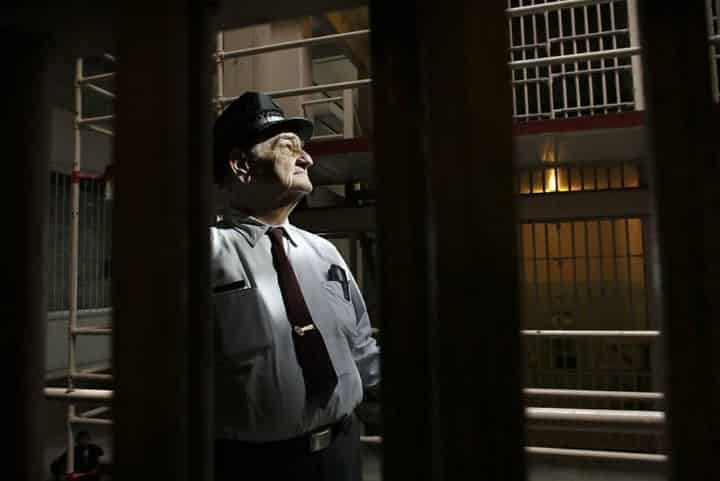
First Contact

The letter that shocked everyone was from John Anglin. The San Francisco Police Department received a letter that read “My name is John Anglin. I escaped from Alcatraz in June 1962 with my brother Clarence and Frank Morris.” This letter started the ball rolling on one of the most discussed unsolved mysteries in American history. It was thought that the men died in the cold waters during the escape, but this letter reopened the case.
The Reopening

The letter was kept secret for years by the San Francisco P.D. until the FBI found something that made them reopen the case in January of 2018. A case over 50 years being reopened seems a little extreme, especially considering the escapees would be in their 80’s at the least, so what would cause them to want to spend money to reexamine the case?
The Short of It

Alcatraz was only opened for 29 years, which is a relatively short amount of time for such a storied and famous maximum security prison. It was designed on a small island off the bay and was considered impossible to escape. When it shuttered its doors in 1963, many of the stories of this maximum-security prison went with it. But, there were three men that escaped, it seemed, and the question still stood; how did they do it?
How to Escape the Rock

The first order of business for the four individuals looking to escape was to come up with a plan. The past had shown pretty dire turn outs for those that made the attempt. Of all that tried to escape, six were shot, two drowned, two more were listed as “missing or presumed drowned,” and 23 were caught. This time would be different. But how?
The Players

In this grand plan, four people were working out the details of the escape. Clarence and John Anglin, Frank Lee Morris, and Allen West were all in cells near each other. This gave them the perfect chance to start to discuss the idea of trying to escape Alcatraz. In addition, the Anglins knew Morris from shared time in an Atlanta prison. Now, all together, they would simple need to get the resources together and make sure the plan was sound.
The Mastermind

It is safe to assume that the inmates were not exactly top of their class, but they were somewhat savvy. Without Frank Lee Morris, though, things may not have ever come together. Morris was the mastermind and had a history of prison escapes. Highly intelligent and full of cunning, becoming orphaned at the age of 11 taught him independence as he was sent from one foster home to another. At 13 he was convicted of his first crime. This life, lead him to becoming the brains of the four convicts.
Previous Experience

Louisiana State Penitentiary was known as the Alcatraz of the South. This is where Frank Lee Morris beefed up his resume by showing that he was able to do what others thought would be impossible. Serving a ten year sentence for bank robbery, he decided he didn’t want to stick around. After his escape, he was caught again about a year later, for another robbery. This time he would be tested with the real Alcatraz.
The Anglins

Two of the other players, John and Clarence Anglin, would become part of the team that Morris would build for his escape. Georgia born, the brothers moved to Florida with their family for work. Coming from a farming family, they had to go where the work was, and with a family of 13 children, there was no way that they couldn’t follow the best work. In June, the entire clan would head north for cherry picking, something that would be useful in the escape.
Natural Training

The Anglin brothers were very close within their family. As the entire group would head as far north as Michigan during cherry picking season, the two stayed together nearly all the time. Between work, the brothers would swim in Lake Michigan and, reportedly, were extremely good swimmers. As Alcatraz was an island, or “The Rock”, these skills would come in handy down the road. But first, they needed to be caught. In 1956, they were arrested for bank robbery.
The Final Piece

Morris needed one more person to join the team. With the Anglin brothers now in Alcatraz after several failed escape attempts at Atlanta Penitentiary, it was time to bring in Allen West. West also had a history with escape and the experience of the four would be important as they started to put their plan into place.
Looking for Tools

There would be no way to make an escape without the right tools. The group of four were among the few at Alcatraz that were arrested for non-violent crimes. This let them fly under the radar of the more watchful guards as they seemed to pose less of a threat. Alcatraz was also more than a prison; it was also a factory for the US military, making clothes, shoes, and furniture. All of this would be extremely important in the story to come.
A Little Crafting

The plan that was developed was not an overnight thing. It would take time. Slowly, the group gathered and built the tools needed to begin their escape. Tools were used to build human-like dummies and they would also need a way to get through the icy waters off the shores of “The Rock.” Guards were also a concern, as they generally spoke with firearms first.
The Dummies

Each of the four team members had certain responsibilities to ensure that the plan would work on the night of the escape. The Anglins would be in charge of the dummy heads. These were made of toilet paper, human hair, and soap wax. The hair was obtained from the on site barber shop, the rest came from their resource gathering.
An Escape Route

Tools became another big part of this piece of the plan. With simple things such as spoons and wood, the team was able to create wrenches, picks, and other items needed to dig small tunnels to get out of their cells. It was laborious work but they completed it. Each evening from 5:30pm until around 9, they worked on the small tunnel, chipping away little by little until they were done. The vents in their cells were removed and replaced each time, making it virtually invisible to the guards.
The Unlikely Ally

One of the more surprising “members” of the team was Alcatraz itself. The prison had started to deteriorate in many places, which made the cement easier to break through. The prison used saltwater for showers and dishes, which corroded and destroyed the pipes, which then leaked into the walls, crumbling the solid cells before the plan every came to be.
Musical Distractions
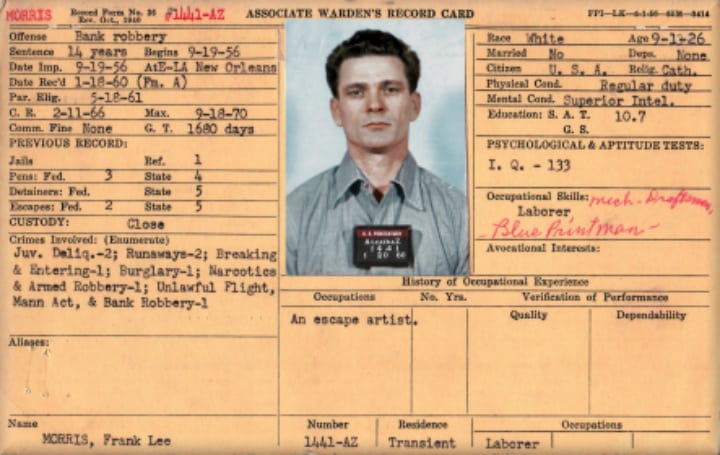
Obviously, all the work the team was doing would not be quiet. So, how did they get by without alerting the guards due to all of the noise? That is where Morris’ many talents came in. As noises started to rise, he would play his accordion as loudly as he could to cover the sounds of the digging.
Time to Climb

The corridors behind the wall which had been broken down at this point were used for utility personnel. It was a simple climb to the top to make the first leg of their escape. The only issue they faced was the hatches being cemented shut. Fortunately, they found one they could open with a wrench, which would let them get to the roof without much trouble.
A Small Hole
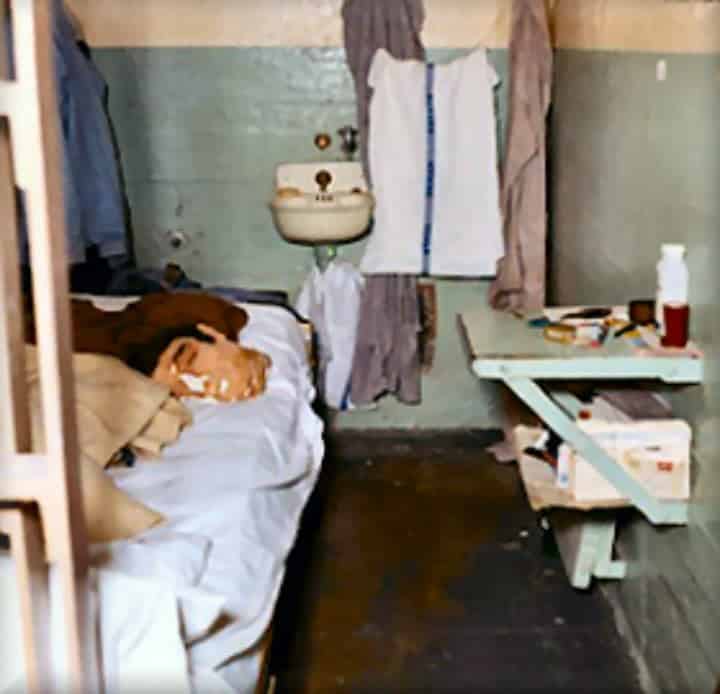
The vents that covered the holes being dug through the wall were small. Barely large enough for the men to squeeze through. Once they knew they would be able to get through and to the roof, they started gluing and stitching life vests and their raft together. The raft would be a necessity as the waters off of Alcatraz were difficult and cold. They used more than 50 raincoats to create their vests and the raft and these pieces create a large part of the mystery surrounding their escape.
Tell Me When
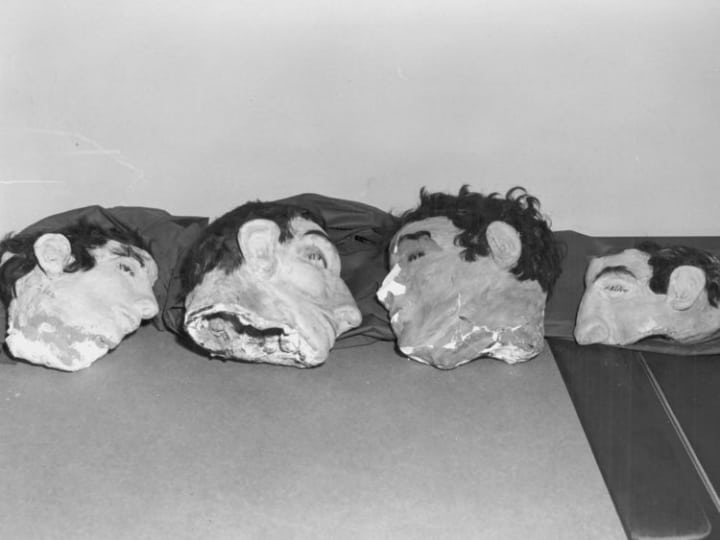
With everything prepared, all that was left was a signal that would let each of the group know when it was time to move. They needed to wait for Allen West to finish his hole as he was the last one left to complete the digging. When the signal came on June 11, 1962, the plan was started, but things did not go as expected.
The Plan is Sprung

As soon as the lights went out on June 11th, after West had finished digging his tunnel, the decoys were put in place and the escape was started. This was dangerous, and they all knew it, but they were so desperate to get out of Alcatraz, and the idea of living a free life was so tempting, that nothing would cause them to turn back. The question was still in the air of how likely this plan would be to succeed.
The Best Laid Plans

While the team had spent a significant amount of time getting their plan set and in place, the saying that the best laid plans go awry reared its ugly head. While Morris and the Anglins were able to get out of their cells, West was stuck. The hole was too small for him to fit through and he needed to make it bigger, which was no easy task. Morris tried to help, but he couldn’t get the concrete to break and at 9:30 pm Morris asked for a glass of water from West. At this point, they knew West would have to stay in his cell and only the three would be able to try to escape.
The Three Musketeers

After months of work, the three criminals did not relish the thought of leaving West behind, but this was the time to go and there was no turning back. In actuality, it may have been a blessing in disguise as having one less person on the raft made the escape more likely once they reached the waters. The three started to climb the 30 foot plumbing in the utility corridor to reach the roof. What would happen when West was found, and the other three were missing though?
Making it to Shore

The most difficult part of their journey was about to start. They needed to cross over 100 feet on the rooftops of Alcatraz, descend down 50 feet of piping next to the showers and then sneak past the guards to make it to the shore. Shockingly, they pulled these feats off and made it to the water’s edge where they would need to inflate the raft and life jackets before moving forward. They were far from home free, but things were working in spite of the loss of West.
Never Seen Again?
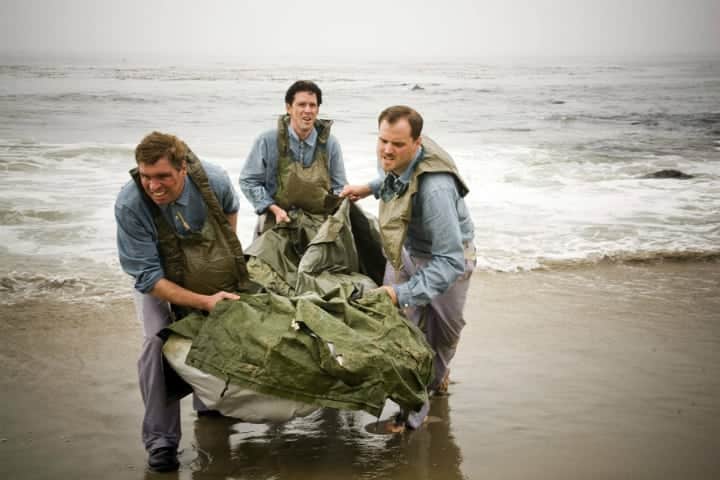
It is likely that West was the last person to see the three conspirators. Once they made it to the shore, inflated their raft and vests, they headed out into the rough, frigid, waters at about 11:30 pm. It would take until morning to discover they were missing. The blaring alarm of an escape woke the inmates and guards in Alcatraz once the dummy heads were discovered. It was beyond belief that anyone would attempt an escape, but after investigations, guards would soon find out that three inmate were missing.
West to Follow

West had not given up on his escape. He continued to work at the hole as the other three were making their escape. Eventually, he made it large enough to get out and followed the same path the other three had, as was the plan. Once he made it to the shore, though, the others were gone and he would have to swim the waters if he wanted to escape. The problem was that the waters were a sure death sentence.
The Sun Rises on West

West made the difficult choice to return to his cell and wait for the three inmates to be discovered missing in the morning. What would become of him was the question. He figured if he cooperated with the authorities he would be home free. This is just what he did, and he recounted everything that has been discovered so far. He also told authorities that his co-conspirators had planned to head to Angel Island, steal a car and clothes and head separate ways.
We Have a Problem

Now that the plan had been told to the authorities, West just had to sit back and wait for everything to come together. Unfortunately for West, after twelve days, no car had been stolen in the described area. This means that the three either didn’t make it to land, or they went somewhere else. This isn’t completely out of the realm of possibility. While West was smart, the others were not idiots. If they figured West would tell the plan, they may have diverted their original path to make escape more plausible. The FBI started a formal investigation to determine the fate of the three escapees.
The Waters Could Kill
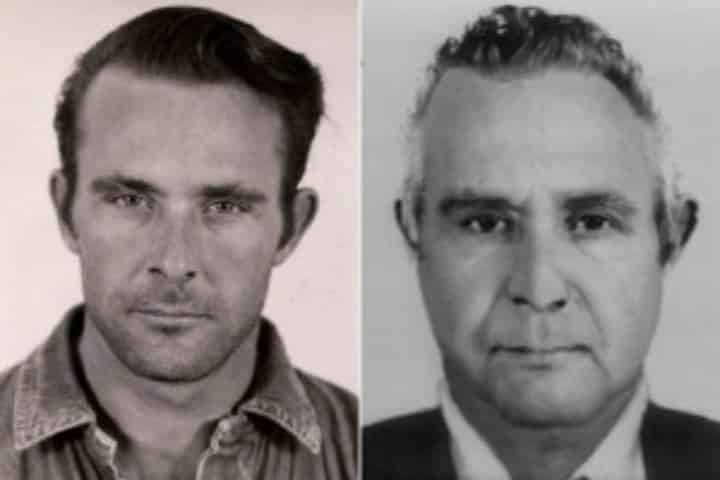
One of the long standing theories is that the brothers and Morris simply fell into the waters and drowned. As the water was cold, around 50 degrees Fahrenheit, it was unlikely that they would survive. In time, they could have become acclimated, but Alcatraz kept their water warm to prevent that. Most experts determined that an adult male would only survive the waters for 20 minutes before their body started to give up. Though this was a likely result, they still looked at the possibility of an escape and what they would look like as older men.
Searching the Waters

Believing that the men likely drowned, the FBI and other experts started to calculate the current in the bay to try to determine the most likely place to find their bodies. A month after the escape, a Norwegian freighter stated that it had seen a body near the Golden Gate Bridge, about 17 miles away to be specific. In the description, the freighter stated the clothes were similar to those that were worn by the inmates. But the report did not come in time and the body was lost. The investigation closed on December 31, 1979, almost 20 decades after the escape, with the assumption that the three drowned in the San Francisco Bay. That should be the end of the story. That isn’t the end of the story.
Merry Christmas

In 2015, The History Channel ran a documentary about the case, with further evidence that the Anglins not only escaped Alcatraz, but survived. They showed “proof” by releasing a Christmas card with the handwriting of the brothers, but the date was missing. A photograph from Brazil in 1975 apparently included the two brothers as well. Forensic experts studied the picture and concluded that it was likely John and Clarence Anglin. This would mean that the two survived at least 13 years after the escape.
Just Out of Reach

More evidence piled up as Robert Anglin, one of the brothers, stated on his deathbed that he had been in contact with John and Clarence until 1987 when they lost contact. As this was an ongoing Interpol investigation at this point, family members were asked to not contact the brothers as severe punishment would be faced if they were found to be alive.
Further Proof?

In 2013 those following the case were in shock when a letter from someone claiming to be John Anglin appeared. In it, he wrote, “Yes we all made it that night but barely! … I’m 83 years old and in bad shape. I have cancer. Frank passed away in October 2008. His grave is in Argentina under another name. My brother died in 2011.” More information was found in the letter, some of it illegible, but more information of John’s whereabouts were revealed, “This is the real and honest truth. I could tell you that for seven years of living in Minot, North Dakota and a year in Fargo.”
Living in California
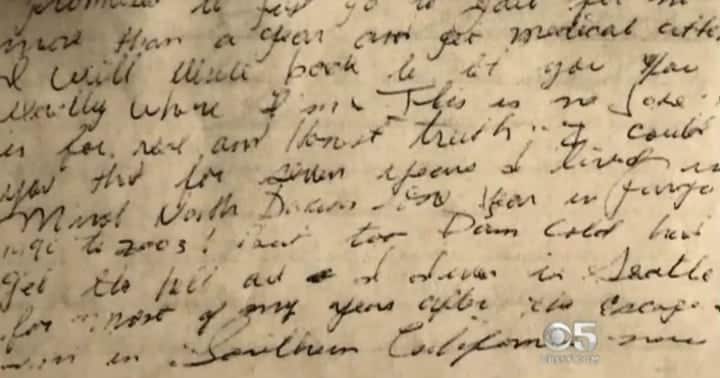
Of special interest in the letter, the person claiming to be John stated that he had been “Living in Southern California…” and was desperate for help. He wanted to make a deal to try to ease his burdens, but it was not what you would expect, and law enforcement was not going to say yes without some serious thought.
A Plea for Help

“If you announce on TV that I will be promised to first go to jail for no more than a year and get medical attention, I will write back to let you know exactly where I am. This is no joke…” was written as the negotiation opener. Law enforcement wanted to try to get as much information as possible from the letter before making any concessions.
Looking for Authenticity

With the letter in hand, the FBI analyzed all they could. They looked for DNA, fingerprints, and compared it to writing samples of the men that escaped. Their results were inconclusive. A security expert on KPIX, a CBS station in San Francisco said that this meant yes, and no, and everything would be in limbo when it comes to how authentic the letter is and the truth behind the writers identity.
The Law Enforcement Argument

The US Marshals told The Washington Post that they could not say that the letter was written by John. They did say, however, that they would continue to investigate leads until the men were proven deceased or they would turn 99. The FBI replied that they ended their investigation in 1979 after 17 years of work on the case with no credible evidence pointing to their survival in the United States, or overseas.
A Response from the Marshals

After the letter was released to the public, the U.S. Marshals released the following statement:
“There is absolutely no reason to believe that any of them would have changed their lifestyle and became completely law abiding citizens after this escape.”
Could the Case Warm Up?

A team of researchers were able to calculate the currents of the time to see if the currents would have allowed the three men to survive. In 2009 Deputy U.S. Marshal Michael Dyke told NPR, “There’s an active warrant, and the Marshals Service doesn’t give up looking for people.” So, what other surprises would the story hold now?
The Last Guard

In March of 2018, Jim Albright, gave an interview to ABC affiliate ABC 7 in honor of the 55th anniversary of the closing of Alcatraz. When asked what he thought happened to the escapees, he simply replied, “It depends on whether you’re talking to me or you’re talking to their mother. I believe they drowned, I really do.”
The Continuing Mystery

It is impossible to say for sure if the three men escaped and survived or not. While evidence will point some to believe the three made it off the island safely, others will point to the fact that there was no evidence to support that claim. If the three survived, they would look something like the above pictures. They would also be in their late 80’s or 90’s. But, if they were captured again, they would still need to serve the time in prison and answer for the escape, regardless of their age if captured. That is, of course, if they even made it through the waters off the bay of “The Rock.”








